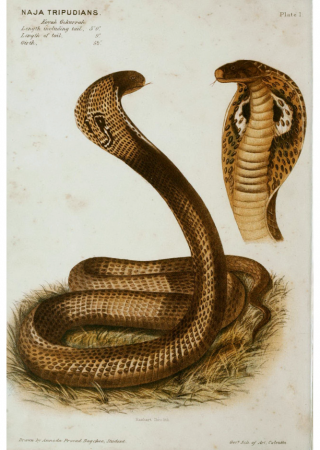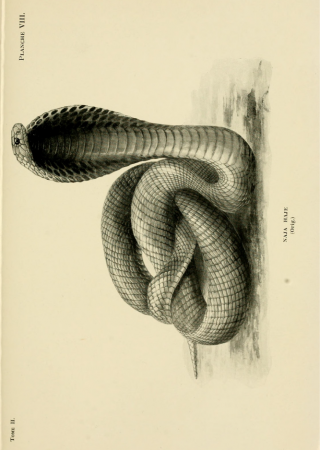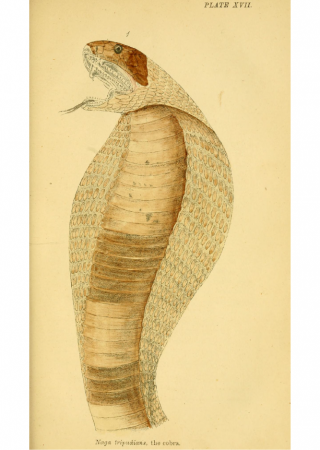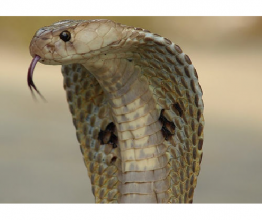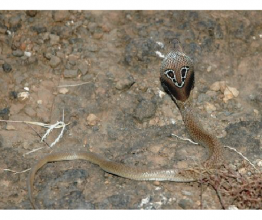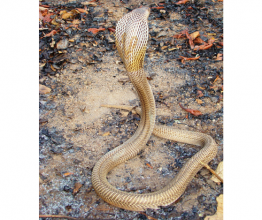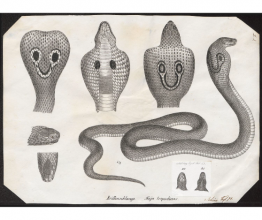Indian Cobra
- ...the Indian cobra is one of the most dangerous snakes in India, killing around 10,000 people each year?
- ...the Indian cobra is attracted to places like rice paddies, where many cases of biting occur?
- ...the poison of the India cobra is used in research, and for manufacturing analgesics and anti-cancer medications?
- ...cobras are deaf, and their 'dance' is a reaction to the movements of a fakir's flute, rather than the music?
- ...Indian cobras kept in captivity may live up to 30 years?
- ...Indian cobras are considered holy animals and certain days of the year are dedicated to their worship?
- ...the Indonesian subspecies of the Indian cobra can spray its venom to a distance of several meters?
Basic information:
Phylum – chordates (Chordata)
Class – reptiles (Reptilia)
Maximum length – 2.22 m
Food – small mammals
Distribution – tropical Asia
Type of poison – neurotoxin
Distinguishing marks:
Typically over one meter long snake, with a hood over its neck vertebrae that it inflates when threatened. Body is variously colored, from creamy white through brown, all the way to black. Sometimes it has typical half-ring patterns on the back of its neck.
The Indian cobra is a venomous snake occupying large areas of the Middle East, from India through China and Indonesia. Indian natives call it nag, naga, pambo, gokhura and nagara havu. The Indian cobra normally grows to a length of around one meter. It lives anywhere it can find suitable shelter, even in areas occupied by humans. Cobras do not normally attack humans when not threatened, except during mating season. When meeting a cobra, the best strategy is to remain calm, since cobras react aggressively to rapid movements. The cobra's poison, similarly to that of other rat snakes (genus Elaphe) has primarily neurotoxic effects.

